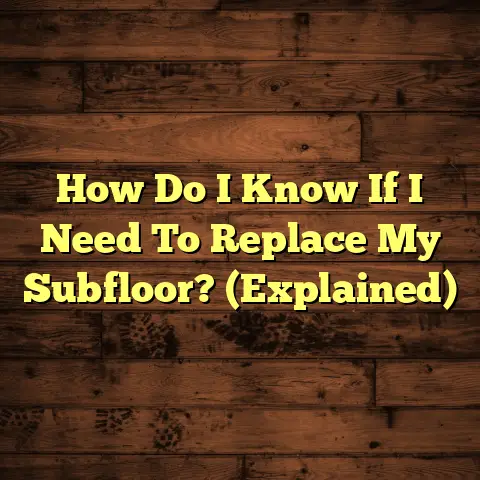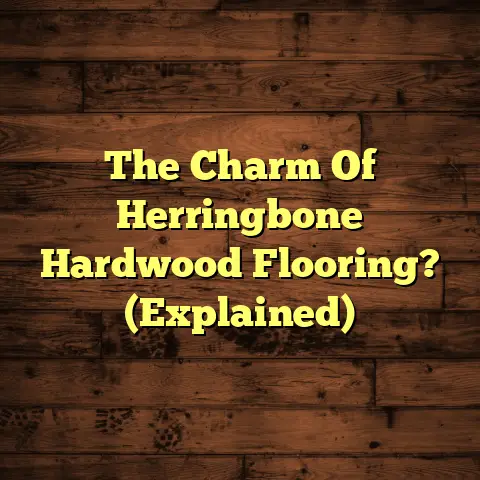Cost to Refinish Hardwood Floors in the United Arab Emirates
Refinishing hardwood floors is a popular choice among homeowners in the United Arab Emirates (UAE) who wish to restore the beauty and functionality of their flooring. With its tropical climate, diverse architectural styles, and a growing appreciation for aesthetic enhancements, the demand for quality flooring solutions has surged. This comprehensive guide aims to provide an in-depth analysis of the costs associated with refinishing hardwood floors, focusing on various factors that influence pricing, comparisons with alternative flooring options, and essential considerations for homeowners.
Overview of Major Cost Factors
Understanding the cost of refinishing hardwood floors requires an exploration of several critical factors. Each aspect contributes to the overall expenditure and can significantly affect your budget.
1. Area Size
The size of the area being refinished is a primary determinant of cost. Generally, flooring projects are priced per square foot. Larger spaces will require more materials and labor, leading to higher total costs. For instance, refinishing a 200 sq ft room may cost significantly less than refinishing an entire 2,000 sq ft home, but the per-square-foot cost may decrease as the area increases.
2. Hardwood Type
The type of hardwood being refinished greatly impacts the cost. Different species of wood vary in density, grain patterns, and surface hardness, all of which influence refinishing techniques and material choices:
- Oak: Commonly used and relatively affordable, oak is durable and easy to refinish.
- Maple: Known for its fine grain and light color, maple is harder to work with, potentially driving up costs.
- Cherry: Prized for its rich color and smooth texture, cherry hardwood is often more expensive to refinish.
- Exotic Woods: Species like teak or mahogany are typically more costly due to their rarity and unique characteristics.
3. Labor Costs
Labor represents a significant portion of the overall refinishing cost. Rates can vary based on factors such as location, contractor experience, and the complexity of the job. In the UAE, skilled labor may command higher prices due to demand for quality workmanship. Homeowners should budget accordingly, keeping in mind that professional refinishing can save time and ensure a quality finish.
4. Additional Considerations
Several additional factors can influence the total cost of refinishing hardwood floors:
- Floor Removal: If old flooring or damaged boards need to be removed prior to refinishing, this will add labor costs.
- Subfloor Replacement: Repairs or replacements of the subfloor may be necessary if it is damaged, which will increase costs.
- Material Grade: Higher-quality finishes and stains will result in increased material costs.
- Room Size/Layout: Complex layouts with many corners or features may require additional labor.
- Installation Type: Different refinishing methods, such as sanding versus screening, can also affect pricing.
- Wood Type: Exotic hardwoods often require specialized techniques and products that can increase costs.
Detailed Cost Breakdown
Average Cost Range
The average cost to refinish hardwood floors in the UAE typically ranges from AED 30 to AED 70 per square foot. Below is a detailed breakdown based on different project sizes:
| Project Size (sq ft) | Estimated Cost (AED) |
|---|---|
| 200 | 6,000 – 14,000 |
| 500 | 15,000 – 35,000 |
| 1,000 | 30,000 – 70,000 |
| 1,500 | 45,000 – 105,000 |
| 2,000 | 60,000 – 140,000 |
Cost by Hardwood Type
Different types of hardwood require different refinishing approaches and costs:
- Oak: AED 30 – AED 50 per sq ft
- Maple: AED 40 – AED 60 per sq ft
- Cherry: AED 50 – AED 70 per sq ft
- Exotic Woods (e.g., Teak): AED 60 – AED 100 per sq ft
Breakdown by Refinishing Process
Refinishing can involve various processes that can affect costs:
- Sanding: The most common method; costs range from AED 30 to AED 60 per sq ft.
- Screening: A less invasive method that typically costs between AED 20 and AED 50 per sq ft but may not be suitable for severely damaged floors.
- Staining: Additional costs for staining can range from AED 10 to AED 20 per sq ft.
- Finishing: The type of finish (oil-based vs. water-based) will also influence the cost. Oil-based finishes tend to be more expensive but offer durability.
Additional Costs
- Furniture Moving: If you need help moving furniture before the refinishing process, expect to pay an additional fee—typically around AED 200 to AED 500 depending on the volume.
- Repairs: Any repairs needed before refinishing will increase costs. Basic repairs can cost anywhere from AED 5 to AED 15 per sq ft.
Comparison with Alternative Flooring Options
When considering refinishing hardwood floors, it is crucial to evaluate other flooring options available in the market. Below is a comparison table highlighting costs and benefits:
| Flooring Type | Cost (AED/sq ft) | Pros | Cons |
|---|---|---|---|
| Hardwood | 30 – 70 | Durable, aesthetic appeal | Requires maintenance |
| Laminate | 15 – 35 | Affordable, easy installation | Less durable than hardwood |
| Vinyl | 20 – 40 | Water-resistant, versatile | Can look less authentic |
| Carpet | 20 – 50 | Soft, warm feel | Stains easily, less durable |
Hardwood vs. Laminate
While laminate flooring offers a lower initial cost and can mimic the look of hardwood, it lacks durability and can’t be refinished like hardwood can. Over time, laminate floors may need to be replaced more frequently than hardwood.
Hardwood vs. Vinyl
Vinyl flooring is another popular alternative known for its moisture resistance and ease of maintenance. However, it does not offer the same level of aesthetic appeal or longevity as hardwood floors.
Hardwood vs. Carpet
Carpet may provide comfort and warmth; however, it tends to harbor allergens and stains easily. Moreover, carpets do not offer the same resale value as hardwood flooring.
Signs That Hardwood Floors Need Replacement
Before deciding whether to refinish or replace your hardwood floors entirely, consider these signs indicating potential replacement:
- Deep Scratches or Gouges: If your floor has extensive damage that cannot be sanded out effectively.
- Water Damage: Signs of warping or discoloration due to moisture exposure often indicate severe issues that may necessitate replacement.
- Severe Cupping or Crowning: These conditions suggest underlying structural problems that may require complete flooring replacement.
- Persistent Odors: Lingering smells might indicate mold or decay beneath the surface that can’t be resolved with simple refinishing.
Pros and Cons of Hardwood Flooring
Pros
- Durability: With proper care, hardwood floors can last for decades—sometimes even generations.
- Aesthetic Appeal: They add a touch of elegance and timeless beauty to any space.
- Versatility: Hardwood complements various design styles from traditional to modern.
- Increased Property Value: Homes with hardwood flooring typically have higher resale values.
Cons
- Cost: The initial investment in hardwood flooring is usually higher than other options.
- Maintenance Needs: Regular upkeep is necessary to maintain appearance and durability.
- Susceptibility to Moisture: In humid conditions or areas prone to spills, hardwood may warp or swell.
Professional Installation vs. DIY
While some homeowners may consider tackling refinishing as a DIY project, there are significant advantages and disadvantages to weigh before proceeding:
Professional Installation
Benefits:
- Expertise: Professionals bring experience and skill that can ensure high-quality results.
- Time-Saving: Hiring experts generally leads to quicker completion times.
- Quality Assurance: Professionals often provide warranties for their work.
Costs:
Typically ranges from AED 20 to AED 50 per sq ft for labor alone, depending on complexity and local market rates.
DIY Considerations
Benefits:
- Cost Savings: Doing it yourself eliminates labor costs.
- Personal Satisfaction: Successfully completing a project can offer a sense of accomplishment.
Challenges:
- Skill Level Required: Requires knowledge of tools and techniques; lack of experience can lead to mistakes.
- Time Consumption: DIY projects can take significantly longer than hiring professionals.
- Tool Rental Costs: Expenses for renting specialized equipment can add up quickly; expect AED 500 – AED 1,500 for necessary tools.
Questions to Ask Hardwood Flooring Contractors
Choosing the right contractor is crucial for a successful project. Here are some essential questions to ask:
- What is your experience with refinishing hardwood floors?
- Understanding their background helps gauge their expertise.
- Can you provide references from previous clients?
- Testimonials from past clients provide insight into their reliability and quality.
- What is included in your estimate?
- Clarify what services are covered in your quote to avoid unexpected costs.
- What type of finishes do you recommend?
- Professionals should offer insights into the best products based on your needs.
- How long will the project take to complete?
- Knowing the timeline helps set expectations for your project duration.
- Do you have insurance coverage?
- Ensures you are protected in case of accidents or damage during work.
- What is your policy on unexpected repairs or issues?
- Helps you understand how they handle unforeseen problems during the project.
Hardwood Floor Care and Maintenance Tips
To maximize the longevity of your refinished hardwood floors, implement these care tips:
- Regular Cleaning: Sweep or vacuum regularly to remove dirt and debris that can scratch surfaces.
- Use Proper Cleaners: Utilize pH-balanced cleaners specifically designed for hardwood; avoid harsh chemicals that could damage finishes.
- Humidity Control: Maintain indoor humidity levels between 30% and 50% to prevent warping.
- Furniture Pads: Place pads under furniture legs to minimize scratches when moving items around.
- Avoid Excessive Water: Wipe up spills immediately; never mop with excessive water as it can seep into seams.
Seasonal Maintenance Considerations
In addition to regular cleaning habits, seasonal maintenance becomes crucial in maintaining your hardwood floor’s condition:
Spring Maintenance
- Conduct a thorough inspection after winter months; look for signs of water damage or moisture buildup.
- Clean air ducts and vents to reduce dust accumulation on floors.
Summer Maintenance
- Monitor humidity levels; use air conditioning when necessary to prevent excessive moisture in summer heat.
- Ensure window treatments are used during peak sun hours to prevent UV damage.
Fall Maintenance
- Prepare for winter by checking door seals; this will help minimize cold drafts that may impact floor condition.
- Schedule professional cleaning if necessary; this is a great time for deep cleaning between seasons.
Winter Maintenance
- Use mats at entryways to reduce snow and salt tracked onto floors during winter months.
- Regularly check for leaks around windows; condensation can lead to moisture problems if not addressed promptly.
Conclusion
Refinishing hardwood floors represents a significant investment that enhances both aesthetic appeal and property value in any home across the UAE. By understanding the various factors influencing costs—from materials and labor rates to specific wood types—homeowners can confidently budget for their projects.
Whether you choose professional installation or a DIY approach, understanding the importance of proper maintenance will ensure your hardwood floors remain stunning for years to come.
Informed homeowners are empowered homeowners—armed with knowledge about signs indicating when a floor needs replacement versus simple refinishing; they will make decisions that reflect both their style preferences and practical needs.
By taking proactive steps regarding care and seasonal maintenance, you can ensure that your investment in hardwood flooring continues to bring beauty and value into your home well into the future!





